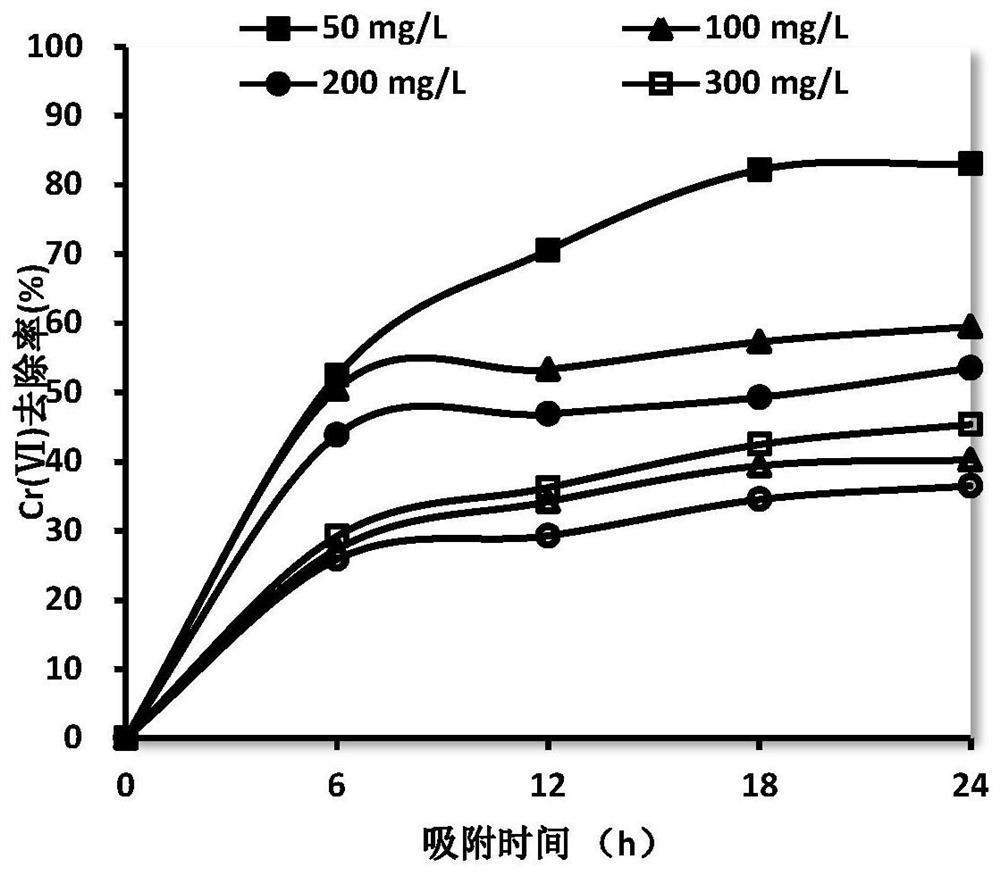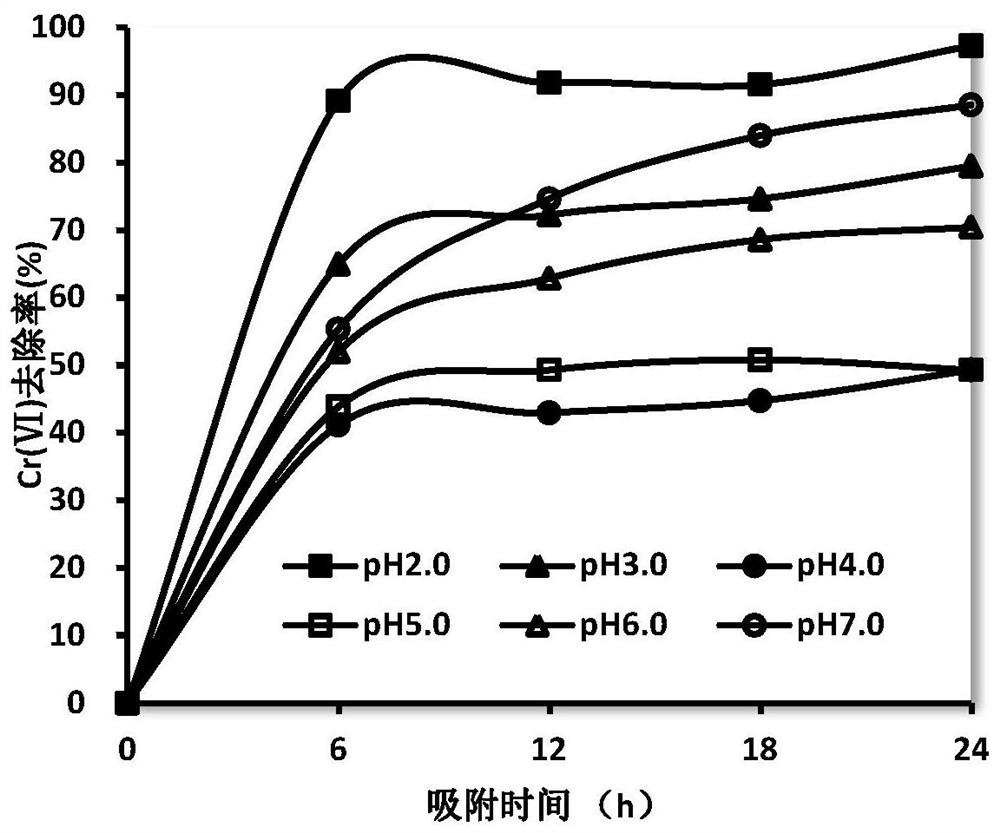Application of lysinibacillus fusiformis in removing hexavalent chromium in eutrophic wastewater
A technology of Bacillus lysine and Bacillus, applied in the field of microorganisms, can solve the problems of unproven tolerance and resistance, and achieve the effect of strong adsorption and reduction
- Summary
- Abstract
- Description
- Claims
- Application Information
AI Technical Summary
Problems solved by technology
Method used
Image
Examples
Embodiment 1
[0027] Embodiment 1 Spindle-shaped lysine bacillus to the biosorption-reduction test of Cr(VI)
[0028] 1. Cell preparation
[0029] Take 1000mL LB culture solution of Bacillus spindle-shaped lysinus in the logarithmic phase, centrifuge at 4°C and 13000r / min for 10min, add sterile water and repeat centrifugation for 3 times, and wet the cells with constant weight, as live bacteria, in 4 Store at ℃ for later use.
[0030] 2. Single factor test of biosorption-reduction test of WTXJ1-4 live bacteria
[0031] Take 0.5~3.0g / L WTXJ1-4 live bacteria respectively, add 100mL sterile aqueous solution containing potassium dichromate concentration of 0~500mg / L, at pH2.0~pH7.0, adsorption temperature 26~38℃, Cultivate for 0-24 hours under the condition of rotation speed 0-200r / min, and explore the single-factor suitable conditions for the removal of hexavalent chromium pollutants by WTXJ1-4 living bacteria in eutrophic wastewater. The preset central values of each single factor are as...
Embodiment 2
[0046] Example 2 Tolerance and resistance characteristics of lysine bacillus spindle-shaped to Cr(VI)
[0047] Add concentrations of 0mg / L, 20mg / L, 40mg / L, 60mg / L, 80mg / L, 100mg / L, 200mg / L, 300mg / L, 400mg / L and 500mg / L to 100mL of LB medium respectively. 1 L of potassium dichromate, to which 10mL was added successively in the logarithmic phase spindle-shaped lysine bacillus culture solution, and each concentration was established with 3 parallels, and random sampling was performed at regular intervals to measure the thalline biomass and residual Cr in the solution ( VI) and total Cr, the time relationship curves of the thalline biomass, Cr(VI) removal rate and total Cr removal rate of the spindle-shaped lysine bacillus were established respectively, as Figure 7 shown.
[0048] Depend on Figure 7 It can be seen that with the increase of potassium dichromate concentration, the bacteriostasis of microorganisms rises rapidly first and then tends to be flat, indicating that pot...
PUM
 Login to View More
Login to View More Abstract
Description
Claims
Application Information
 Login to View More
Login to View More - R&D
- Intellectual Property
- Life Sciences
- Materials
- Tech Scout
- Unparalleled Data Quality
- Higher Quality Content
- 60% Fewer Hallucinations
Browse by: Latest US Patents, China's latest patents, Technical Efficacy Thesaurus, Application Domain, Technology Topic, Popular Technical Reports.
© 2025 PatSnap. All rights reserved.Legal|Privacy policy|Modern Slavery Act Transparency Statement|Sitemap|About US| Contact US: help@patsnap.com



